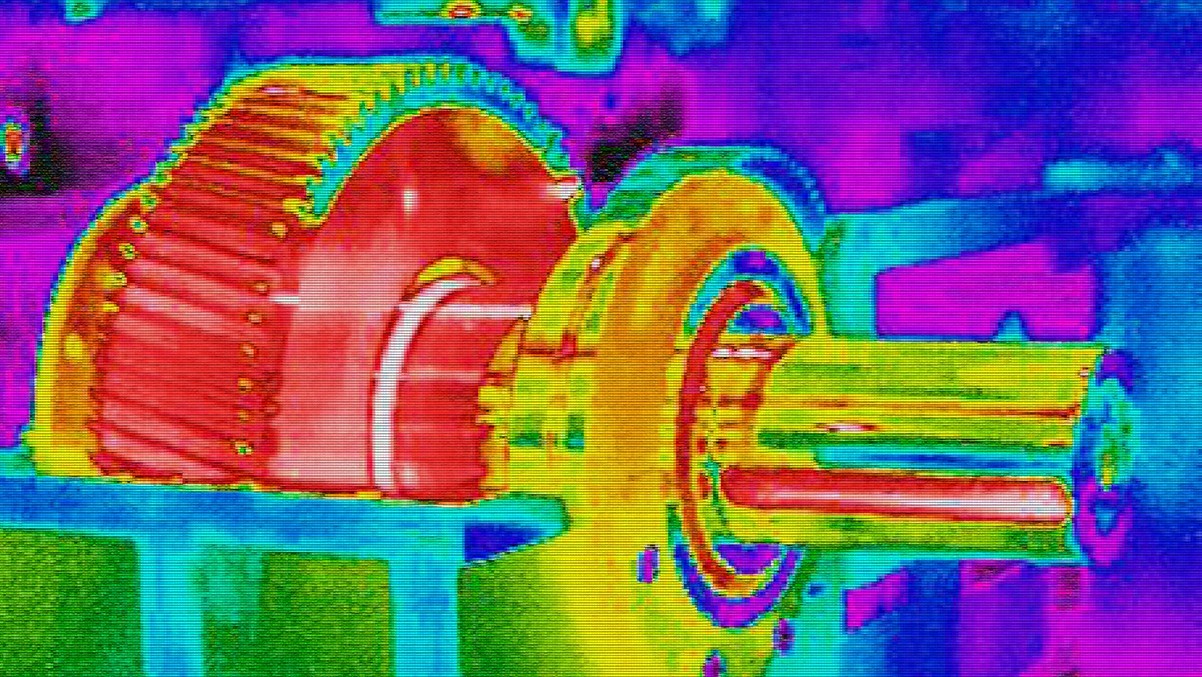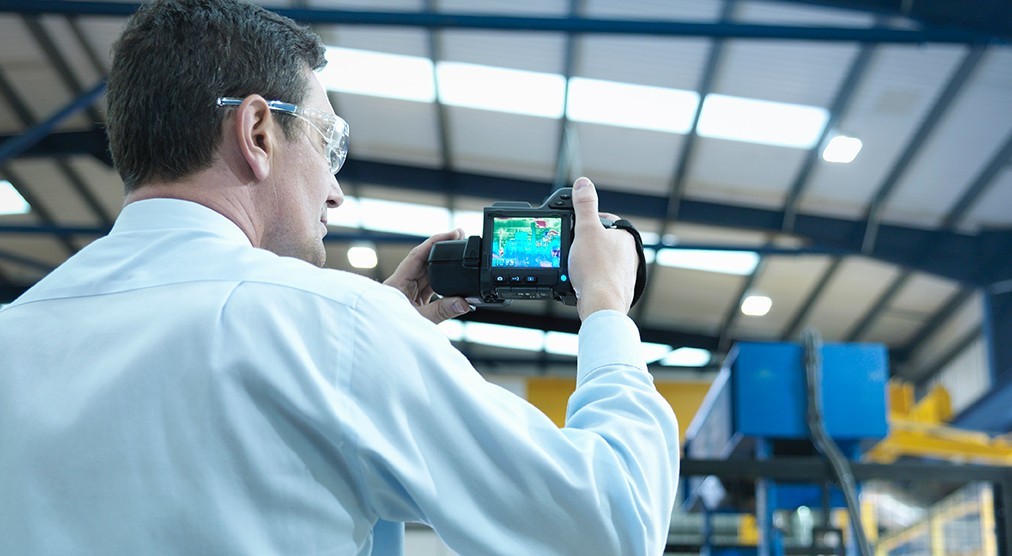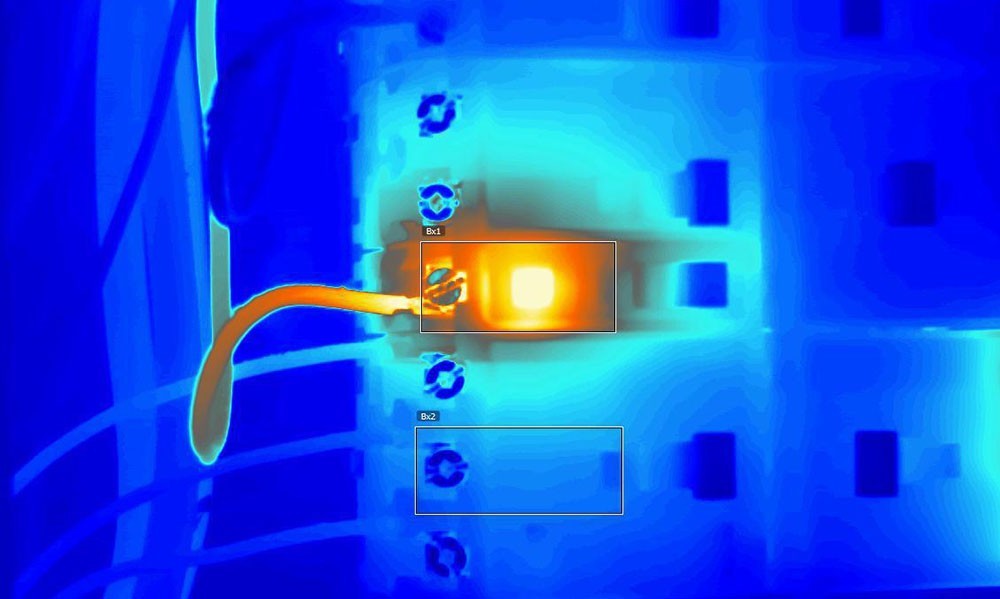Infrared Scanning

Protect Equipment, Ensure Safety
While highly reliable, electrical connections and equipment can gradually deteriorate over time, leading to equipment failure, arcing and fire. Even new components can be defective or poorly installed. Infrared scanning can spot problems early, saving you from potential loss and unnecessary costs.
Benefits of Infrared Scanning
Early Detection
Find problems early to prevent equipment failures and unsafe working conditions.
Continued Productivity
Reduce unscheduled downtime and production losses that result from equipment failures.
Lower Costs
Increase equipment life and reliability while enjoying less in repair costs and lower insurance premiums and deductibles.

Advantages of Choosing Us
Expertise and Experience
Our thermographers have undergone extensive training and are highly accredited in the field of infrared scanning with a Level II certification or higher.
Top-Notch Equipment
We use the highest resolution of cameras to detect even the slightest problem spots in your electrical equipment.
Fast, Thorough Turnaround
With each inspection, we deliver an accurate, comprehensive report featuring photos and recommended actions for issues we detect.
How Infrared Scanning Works
Without getting too technical, infrared scanning detects hot spots in your equipment. It picks up excess heat being generated before components fail. With this technology, thermographers can detect loose/deteriorated connections, defective or damaged equipment, overloads (circuits, transformers, etc.), unbalanced loads, poor installation/workmanship, failed equipment and blown fuses.

FAQs
What accreditations do the thermographers hold?
Each of our thermographers have received Infrared Thermography Certification through FLIR Systems, Inc. of Boston. This certification exceeds the requirements outlined by ANSI/ASNT CP-105 and CP-189 of the American Society for Non-Destructive Testing. Also, each thermographer has undergone extensive instruction under the mentorship of an experienced thermographer.
How much does an infrared inspection cost?
Our infrared inspection is billed at the rate of $225 per hour for time spent onsite performing the inspection and time spent on analysis and report preparation. There is a four-hour minimum charge of $900. This fee can be simply added to your facility’s regular monthly power bill for your convenience. We are happy to provide you with a cost estimate for your facility, if needed. Also, please keep in mind that many commercial insurance companies award lower premiums and lower deductibles for customers who have these inspections performed.
What types of electrical equipment should be inspected?
Typically, equipment inspected includes the main switchboard(s), distribution sections associated with the MSB, distribution panels, lighting panels, busways (overhead), air compressor disconnects and control panels, dry-type transformers, HVAC equipment disconnects and control panels, production equipment disconnects (typically above 30A) and production equipment control panels.
How often should a facility be inspected?
The National Fire Protection Association (NFPA) suggests every commercial and industrial facility have an infrared inspection performed at least once per year. In addition, the NFPA recommends equipment that is critical to your operation be inspected more frequently.
Does equipment need to be de-energized/turned off to have an infrared inspection performed?
No. An infrared inspection needs to be performed on equipment that is and has been operating at normal levels.
What does Alabama Power provide as part of the report?
We will furnish a written report of the infrared inspection findings. This will be provided by email or, if necessary, on a USB flash drive to permit more efficient record keeping of the survey/findings. The report will include a list with detailed information of any exceptions found and a list of all equipment that was inspected. For each exception noted, we will furnish a single report sheet that includes the infrared image showing the exception, a digital image of the equipment along with description of equipment based on available and quantitative information concerning the exception found. We also provide a suggested timetable for addressing each exception.
What will be required of the customer to perform the inspection?
We require the customer furnish an escort, qualified to uncover the electrical equipment to provide line-of-sight exposure to the electrical connections in the equipment being inspected. This person should also be preferably familiar with the electrical layout and critical impact the equipment can have on the facility. If you should hire an electrical contractor to perform this function, then it would be advisable to still supply an escort who has such knowledge of your facility. In addition, we strongly suggest the customer determine ahead of time exactly what equipment they want inspected and compile an inventory of items to be inspected. The escort should be supplied with this information (and any uncertainties resolved) before beginning the inspection, so they can provide clear guidance to the thermographer.
Who should you contact with questions or for more information?
You can contact a representative via our contact form.

